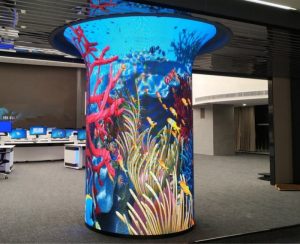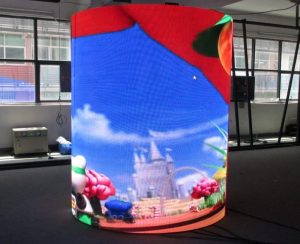In fact, mini led and other technologies still belong to the category of LCD. How to distinguish them from the old technologies in practice?
Liquid crystal, which refers to liquid crystal (LC), is a kind of physical phase state. Because of its special physical, chemical and photoelectric characteristics, it is widely used in display technology and greatly improves the lightness of the device. It has become the most common display technology. So basically, all kinds of LCD screens that are widely discussed are in the category of liquid crystal display. However, the LCD in the current market has already referred to the active matrix TFT-LCD technology, and other technologies such as passive matrix STN LCD have been eliminated.
TFT-LCD is called thin film transistor liquid crystal display, which means that every liquid crystal pixel on the LCD is driven by the integrated thin film transistor and controlled independently, which not only improves the reaction speed, but also precisely controls the color level. This is the basis of current consumer products, its technology has been quite mature, and the cost is low.
Types of liquid crystal
1.png
TFT-LCD The main working principle is that a layer of liquid crystal is sandwiched between two glass substrates. The upper glass substrate is a color filter, while the lower glass is inlaid with a transistor. When the electric field generated by the current passing through the transistor changes, the liquid crystal molecules will deflect and change the light, and then use the voltage to determine the brightness of the pixel, and each pixel contains three primary colors of red, green and blue to form the image Output. Although its circuit layout is very similar to DRAM, only built on glass, its manufacturing process is mainly to make amorphous silicon layer or polysilicon layer, rather than epitaxial high-level transistors.
Based on this technology, we have developed products with different quality and cost. At present, it is mainly divided into three types, TN, VA and IPS panels. The main difference lies in the liquid crystal layer. Twisted nematic liquid crystal, also known as TN liquid crystal, is the lowest cost LCD panel type, but basically its pixel response has been quite fast, enough to meet most of the needs. For example, Samsung has further developed b-tn technology with faster response and fuller color.
2.png
However, the viewing angle of TN liquid crystal is a serious problem, and the VA liquid crystal panel is a further solution. Even without special compensation film, the viewing angle of nearly 170 ° can still be obtained. This is due to the change of TN liquid crystal to vertical alignment liquid crystal, which can achieve higher contrast, but the reaction is slower and the cost is higher than that of TN, so it belongs to the medium level product.



